Overview:
Germany, with its blend of modernity and tradition, is a land that beckons travelers with its rich history, diverse landscapes, and vibrant cultural heritage.
Known for its medieval castles, lively cities, picturesque villages, and fascinating museums, Germany offers something for every traveler.
Whether you’re an art enthusiast, a nature lover, or a history buff, Germany has an array of attractions that promise a unique experience.
This blog highlights the best 14 tourist attractions in Germany, providing insight into their historical and cultural significance, unique features, and travel tips for a memorable visit.
Table of Contents
1. Neuschwanstein Castle, Bavaria

Perched atop the Bavarian Alps, Neuschwanstein Castle is a fairy-tale palace that served as the inspiration for Disney’s Sleeping Beauty Castle. Its dreamy architecture and enchanting location make it one of Germany’s most iconic landmarks.
Historical and Cultural Significance: Built by King Ludwig II in the 19th century, Neuschwanstein Castle was intended as a personal retreat. It symbolizes the king’s romantic ideals and fascination with medieval legends and architecture.
Unique Features: The castle’s stunning white facade, pointed towers, and intricate interiors, combined with the breathtaking backdrop of the Bavarian Alps, create a magical atmosphere. The surrounding landscape, especially during autumn or winter, adds to its picturesque charm.
Best Time to Visit: May to October (for pleasant weather and clear views) or December to February (for a snowy, magical ambiance).
Travel Tips:
- Transportation: The castle is accessible via train to Füssen and then a bus or taxi to the village of Hohenschwangau. From there, it’s a 30-minute uphill walk or a short shuttle bus ride to the castle entrance.
- Accommodations: Stay in nearby Füssen or Hohenschwangau for easy access to the castle and explore other Bavarian attractions.
- Local Customs: Tickets must be booked in advance, and guided tours are mandatory. Photography inside the castle is not permitted.
2. Brandenburg Gate, Berlin

The Brandenburg Gate is a symbol of German reunification and one of Berlin’s most famous landmarks. This neoclassical monument has stood as a witness to some of the most significant events in German history.
Historical and Cultural Significance: Erected in the 18th century, the Brandenburg Gate was once a symbol of division during the Cold War, standing adjacent to the Berlin Wall. Today, it represents unity and peace.
Unique Features: The gate’s grandeur is enhanced by its six columns and the iconic Quadriga statue, depicting the goddess of victory riding a chariot. It’s a popular spot for political gatherings, celebrations, and cultural events.
Best Time to Visit: Year-round (the gate is illuminated beautifully at night).
Travel Tips:
- Transportation: The gate is easily accessible via the Berlin U-Bahn or S-Bahn, with nearby stations like Brandenburger Tor.
- Accommodations: Choose from a wide range of hotels in Berlin, from luxury to budget options.
- Local Customs: Berlin is a multicultural city, so embracing diversity and respecting different customs and traditions is appreciated.
3. The Black Forest, Baden-Württemberg
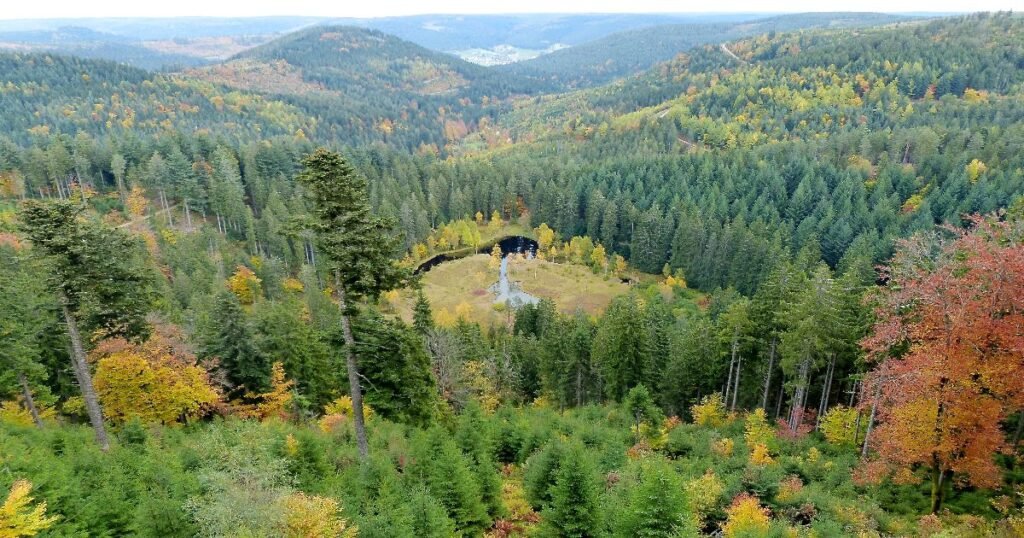
The Black Forest, with its dense woods, picturesque villages, and scenic trails, is a haven for nature lovers and outdoor enthusiasts. Known for its cuckoo clocks, spas, and thermal baths, it offers an idyllic retreat.
Historical and Cultural Significance: The region has inspired numerous fairy tales by the Brothers Grimm and is home to the traditional Bollenhut hats and the iconic Black Forest cake.
Unique Features: The Black Forest is renowned for its scenic drives, hiking trails, and charming towns like Triberg and Baden-Baden. The region’s dense canopy of evergreens creates an almost mystical atmosphere.
Best Time to Visit: May to September (for hiking and scenic views) or December to February (for winter sports).
Travel Tips:
- Transportation: A car is the best way to explore the Black Forest’s various towns and natural attractions.
- Accommodations: Choose from rustic guesthouses, family-run inns, or luxurious spa hotels.
- Local Customs: Respect the natural environment by sticking to marked trails and keeping the area clean.
4. Heidelberg Castle, Baden-Württemberg
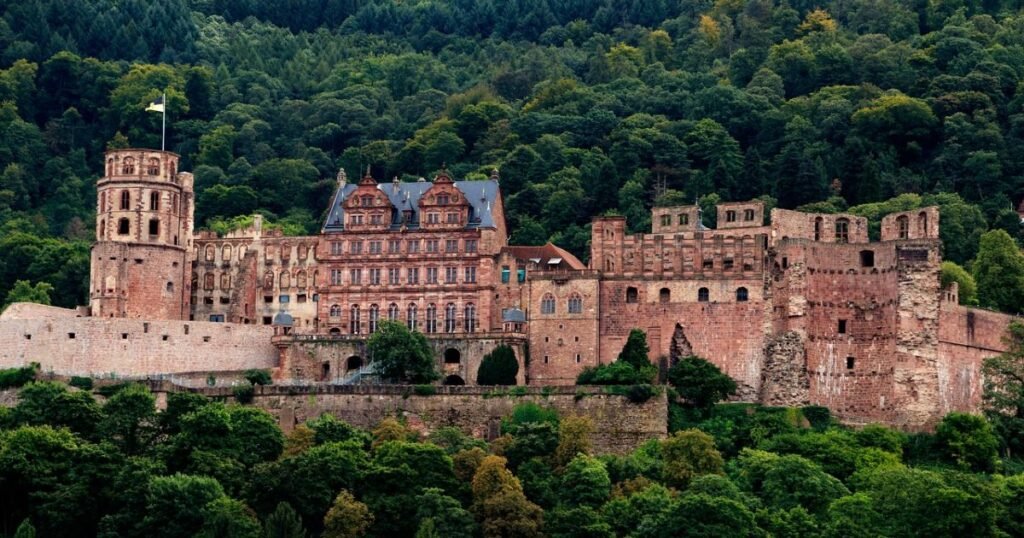
Heidelberg Castle is a striking ruin that towers above the charming town of Heidelberg. Its romantic setting and historical significance make it one of Germany’s most visited landmarks.
Historical and Cultural Significance: The castle, built in the 13th century, was once a residence for German princes and served as a symbol of power and prestige. It fell into disrepair after being damaged in wars but remains a testament to Renaissance architecture.
Unique Features: Visitors can explore the castle’s vast courtyard, see the world’s largest wine barrel, and enjoy panoramic views of Heidelberg and the Neckar River.
Best Time to Visit: April to October (for guided tours and special events).
Travel Tips:
- Transportation: The castle is accessible via the Bergbahn funicular or by foot from the Old Town.
- Accommodations: Stay in the historic Old Town or nearby hotels that offer views of the castle.
- Local Customs: Heidelberg is a university town, so expect a lively atmosphere and vibrant nightlife.
5. Cologne Cathedral, North Rhine-Westphalia

Cologne Cathedral, or Kölner Dom, is a masterpiece of Gothic architecture and a UNESCO World Heritage Site. Its twin spires and immense scale make it one of the most impressive churches in Europe.
Historical and Cultural Significance: Construction of the cathedral began in the 13th century and continued for over 600 years. It houses sacred relics, including the Shrine of the Three Kings, making it a major pilgrimage site.
Unique Features: The cathedral’s interior features stunning stained glass windows, intricate sculptures, and an awe-inspiring nave. Visitors can climb the 533 steps to the South Tower for breathtaking views of Cologne.
Best Time to Visit: Year-round (especially during the Christmas market season).
Travel Tips:
- Transportation: Cologne’s central station is right next to the cathedral, making it easily accessible by train.
- Accommodations: Stay in central Cologne for easy access to the cathedral and other attractions.
- Local Customs: It’s customary to dress modestly when visiting the cathedral and maintain a quiet demeanor.
6. Munich’s Marienplatz, Bavaria

Marienplatz, the central square of Munich, is a bustling hub filled with historical buildings, restaurants, and shops. The square is dominated by the stunning Neues Rathaus (New Town Hall) and its famous Glockenspiel.
Historical and Cultural Significance: Marienplatz has been the heart of Munich since 1158 and serves as a venue for city events and celebrations. The Neues Rathaus, built in the late 19th century, is a prime example of Gothic Revival architecture.
Unique Features: The Glockenspiel, a mechanical clock in the town hall, performs daily shows that depict scenes from Bavarian history, attracting large crowds.
Best Time to Visit: Year-round (especially during the Oktoberfest season and Christmas markets).
Travel Tips:
- Transportation: Marienplatz is well-connected by Munich’s U-Bahn and S-Bahn networks.
- Accommodations: Choose from hotels and guesthouses in the city center for easy access to Marienplatz.
- Local Customs: Tipping is appreciated in restaurants, and reservations are recommended for dining during peak seasons.
7. Sanssouci Palace, Potsdam
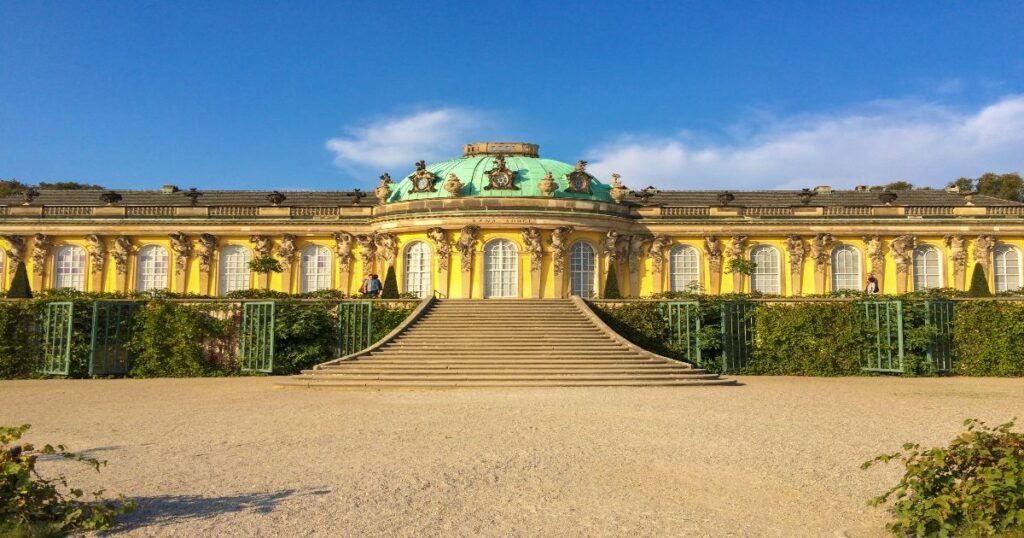
Sanssouci Palace, often referred to as the “Versailles of Germany,” is a stunning example of Rococo architecture. This former summer residence of Frederick the Great, King of Prussia, is nestled amidst beautifully landscaped gardens.
Historical and Cultural Significance: Built in the 18th century, Sanssouci Palace reflects the king’s desire for a peaceful retreat away from the bustling city of Berlin. It stands as a testament to the king’s love for art, philosophy, and nature.
Unique Features: The palace is adorned with exquisite frescoes, ornate stuccoes, and a picturesque vineyard terrace. The sprawling park surrounding the palace includes other architectural marvels, such as the Chinese House and the New Palace.
Best Time to Visit: April to October (for garden tours and pleasant weather).
Travel Tips:
- Transportation: Potsdam is easily accessible from Berlin via train, and the palace is a short tram or bus ride away from the main station.
- Accommodations: Stay in Potsdam or opt for accommodations in Berlin, which is just a 30-minute train ride away.
- Local Customs: As a cultural heritage site, photography is restricted in certain areas, and guided tours are highly recommended to fully appreciate the palace’s history.
8. Zugspitze, Bavaria

Zugspitze, located on the border between Germany and Austria, is the highest peak in Germany, offering a stunning alpine experience with its panoramic views, snow-covered slopes, and thrilling outdoor activities.
Historical and Cultural Significance: The mountain has been a revered site for mountaineers and explorers since the early 19th century. It hosts a historic cogwheel train, which adds to its allure as a must-visit destination in Germany.
Unique Features: Visitors can enjoy a cable car ride to the summit, where they can take in breathtaking views of the Alps, spanning four countries. The Zugspitze Glacier is a haven for skiing, snowboarding, and other winter sports.
Best Time to Visit: December to April (for winter sports) or June to September (for hiking and scenic views).
Travel Tips:
- Transportation: Take the Zugspitzbahn cogwheel train from Garmisch-Partenkirchen to the summit or opt for the Eibsee Cable Car for a quicker ascent.
- Accommodations: Garmisch-Partenkirchen offers a variety of hotels, inns, and lodges catering to skiers and hikers.
- Local Customs: Dress warmly for the summit, even in summer, as temperatures can be significantly cooler at higher altitudes.
9. Miniatur Wunderland, Hamburg
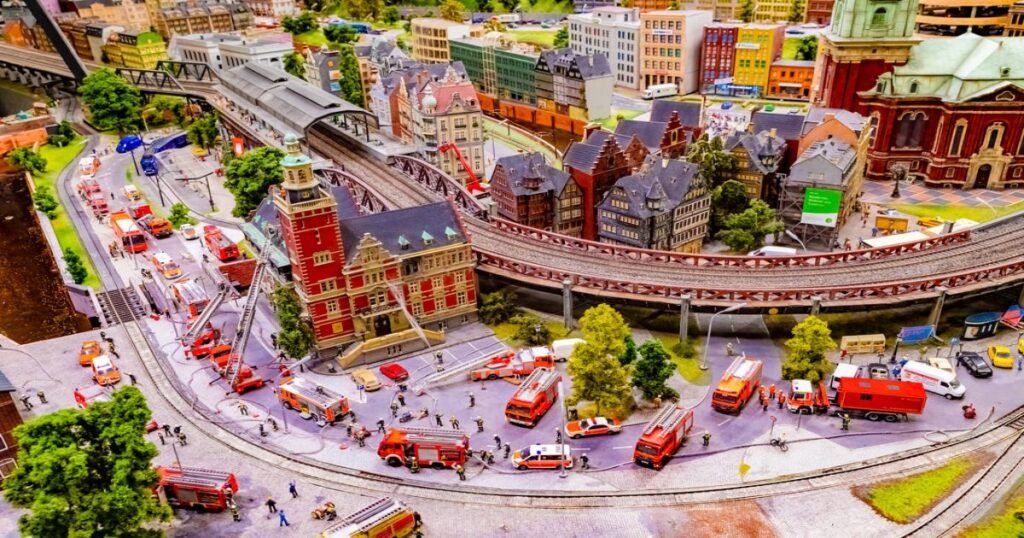
Miniatur Wunderland in Hamburg is the world’s largest model railway exhibition, featuring intricate, meticulously crafted miniature landscapes from around the globe.
Historical and Cultural Significance: Opened in 2001, Miniatur Wunderland has grown to become one of Germany’s most visited attractions, drawing millions of visitors each year. It celebrates the artistry and engineering behind model building.
Unique Features: The exhibition covers various regions, including Germany, Switzerland, and even a recreation of the United States. The attention to detail, with functioning airports, trains, and even day-night lighting effects, is truly impressive.
Best Time to Visit: Year-round (pre-booking is recommended due to high demand).
Travel Tips:
- Transportation: Located in Hamburg’s Speicherstadt district, it’s accessible by public transportation, including buses and trains.
- Accommodations: Stay in Hamburg’s city center for easy access to other attractions like the Elbphilharmonie and the Port of Hamburg.
- Local Customs: Allow ample time for your visit, as exploring the entire exhibition can take several hours.
10. Rothenburg ob der Tauber, Bavaria

Rothenburg ob der Tauber is a well-preserved medieval town that transports visitors back in time. With its half-timbered houses, cobblestone streets, and charming market square, it’s a perfect destination for those seeking a glimpse of Germany’s past.
Historical and Cultural Significance: Rothenburg has retained its medieval character since the Middle Ages, surviving wars and invasions. It’s part of Germany’s Romantic Road, a route that showcases some of the country’s most picturesque towns and landscapes.
Unique Features: Visitors can walk along the town’s medieval walls, explore the Christmas Museum, and enjoy panoramic views from the Town Hall Tower. The town is particularly magical during the annual Christmas Market.
Best Time to Visit: May to October (for walking tours and outdoor exploration) or December (for the Christmas Market).
Travel Tips:
- Transportation: Rothenburg is accessible by train from major cities like Nuremberg and Frankfurt, with a short transfer to Steinach.
- Accommodations: Stay in one of the town’s historic inns or guesthouses for an authentic experience.
- Local Customs: Explore the town on foot, as cars are restricted in the Old Town area.
11. The Romantic Rhine, Rhineland-Palatinate

The Romantic Rhine is a scenic stretch of the Rhine River dotted with castles, vineyards, and picturesque towns. It’s an ideal destination for river cruises, wine tasting, and exploring historic castles.
Historical and Cultural Significance: The Rhine Valley has been a vital trade route for centuries and is home to numerous castles, many of which were built during the Middle Ages. The region’s beauty has inspired poets, artists, and musicians for generations.
Unique Features: Visitors can take a leisurely boat cruise along the Rhine, passing by landmarks such as the Lorelei Rock and castles like Marksburg and Rheinfels. The towns of Bacharach and Rüdesheim are particularly charming.
Best Time to Visit: May to September (for river cruises and vineyard tours).
Travel Tips:
- Transportation: The best way to explore the Romantic Rhine is by boat or train, with frequent services between towns like Koblenz and Mainz.
- Accommodations: Stay in one of the riverside towns or opt for a castle hotel for a unique experience.
- Local Customs: Travelers can participate in a candlelight dinner cruise, savoring local cuisine while enjoying the enchanting Rhine views and storytelling.
12. Dresden’s Frauenkirche, Saxony

The Frauenkirche in Dresden is a symbol of peace and reconciliation. This magnificent Baroque church was rebuilt after being destroyed during World War II and stands as a testament to the city’s resilience and spirit.
Historical and Cultural Significance: Originally built in the 18th century, the church was destroyed during the bombing of Dresden in 1945. Its reconstruction, completed in 2005, was largely funded by donations from around the world.
Unique Features: The church’s stunning dome, known as the “Stone Bell,” dominates Dresden’s skyline. Inside, the ornate altar and serene atmosphere make it a must-visit landmark.
Best Time to Visit: Year-round.
Travel Tips:
- Transportation: The church is located in Dresden’s Old Town, accessible by tram and bus.
- Accommodations: Choose from hotels and guesthouses in the Old Town area for easy access to other attractions like the Zwinger Palace and Semperoper.
- Local Customs: Attend one of the organ concerts or services for a unique experience of the church’s acoustics.
13. Hohenzollern Castle, Baden-Württemberg

Hohenzollern Castle, a quintessential fairy-tale castle perched atop Mount Hohenzollern, is one of the most visited castles in Germany. It serves as the ancestral seat of the Hohenzollern family, who once ruled Prussia and the German Empire.
Historical and Cultural Significance: The current structure was rebuilt in the 19th century in a neo-Gothic style, reflecting the romantic ideals of the era. The castle showcases the grandeur and power of the Hohenzollern dynasty and is still privately owned by the family.
Unique Features: The castle’s panoramic location offers breathtaking views of the Swabian Alps. Inside, the opulent rooms display historical artifacts, including the Prussian King’s crown and memorabilia from Frederick the Great.
Best Time to Visit: May to September (for clear skies and stunning views).
Travel Tips:
- Transportation: The castle is best reached by car from Stuttgart or by bus from the town of Hechingen.
- Accommodations: Stay in Hechingen or nearby towns like Tübingen for a range of accommodation options.
- Local Customs: Guided tours are the best way to explore the castle’s history, so consider joining one to get the most out of your visit.
14. Berchtesgaden National Park, Bavaria
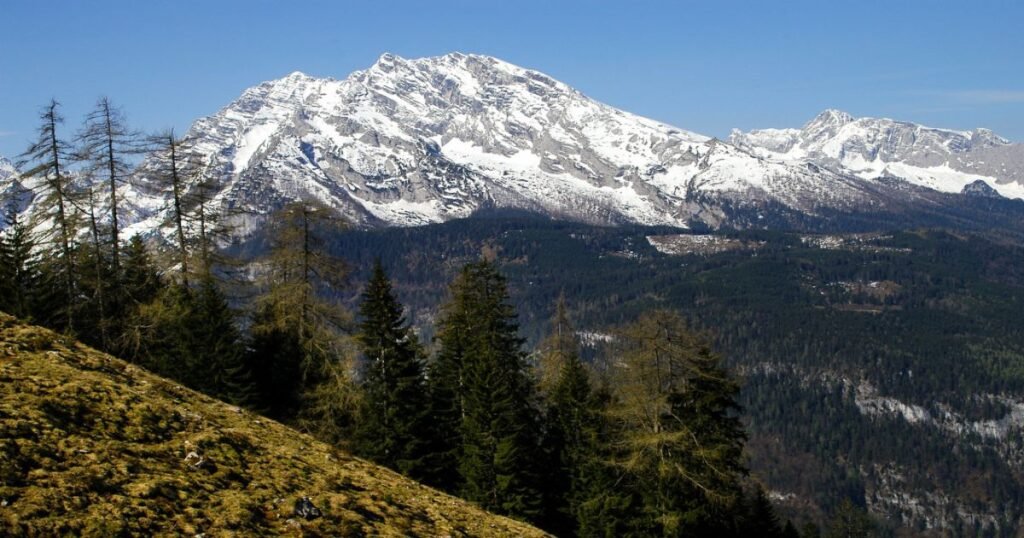
Berchtesgaden National Park, located in the Bavarian Alps, is a paradise for nature lovers and adventure enthusiasts. With its crystal-clear lakes, towering mountains, and dense forests, it offers an unparalleled opportunity to experience Germany’s natural beauty.
Historical and Cultural Significance: Established in 1978, Berchtesgaden National Park is one of the oldest protected areas in the Alps. It’s home to diverse flora and fauna, including the rare golden eagle and Alpine ibex, and is a UNESCO Biosphere Reserve.
Unique Features: The park’s star attraction is Lake Königssee, a pristine alpine lake surrounded by dramatic cliffs. The famous St. Bartholomew’s Church, accessible only by boat, adds to the park’s charm. Hiking trails, including the challenging Watzmann ascent, offer breathtaking views of the surrounding landscape.
Best Time to Visit: June to September (for hiking and outdoor activities) or December to February (for winter sports).
Travel Tips:
- Transportation: The park is accessible by train and bus from Munich or Salzburg. Consider renting a car for more flexibility in exploring the region.
- Accommodations: Berchtesgaden and Schönau am Königssee offer a range of accommodations, from cozy inns to luxury hotels.
- Local Customs: Respect the park’s rules and regulations, and be mindful of the fragile alpine environment. Stay on designated trails and avoid disturbing wildlife.
Also Read: 15 Best Tourist Attractions in France
Conclusion
Germany is a treasure trove of tourist attractions, offering an intriguing blend of historical landmarks, natural wonders, and architectural marvels.
From the medieval towns of Rothenburg and Heidelberg to the majestic Alps and fairytale castles, the country has something to captivate every traveler.
With its efficient transportation network, welcoming accommodations, and deep-rooted traditions, Germany is a destination that invites exploration and discovery.
No matter which of these top 15 tourist attractions you choose to visit, you’ll find yourself immersed in the beauty and history that make Germany such a compelling place to explore.
FAQs
Q1: What is the best time to visit Germany’s tourist attractions?
The best time to visit Germany is during the spring (May to June) and autumn (September to October) months, when the weather is mild and the crowds are thinner. For winter sports, December to February is ideal.
Q2: Are guided tours recommended for Germany’s historic sites?
Yes, guided tours are highly recommended for historic sites like Neuschwanstein Castle and the Berlin Wall to gain deeper insights into the history and significance of these landmarks.
Q3: What should I keep in mind when visiting German castles?
Many castles, such as Neuschwanstein and Hohenzollern, require advance bookings for guided tours. Wear comfortable shoes as exploring castle grounds often involves walking up steep paths or stairs.
Q4: How do I get around Germany efficiently?
Germany has an excellent transportation system with reliable trains, buses, and domestic flights. The Deutsche Bahn railway network is particularly convenient for traveling between major cities and attractions.
Q5: What are some must-try German dishes?
Don’t miss out on trying German specialties like bratwurst, pretzels, schnitzel, sauerkraut, and traditional pastries like Black Forest cake.
Q6: What are the top cities in Germany that you should explore?
Berlin, Munich, Frankfurt, Cologne, and Hamburg are some of the top cities to explore, each offering a unique blend of history, culture, and entertainment.
Q7: Are there any unique cultural customs in Germany that should be known?
Yes, it’s customary to greet people with a handshake, be punctual, and address people by their titles (Herr/Frau) until they are invited to use their first names.
Q8: Is Germany a family-friendly travel destination?
Absolutely. Germany has a range of family-friendly attractions, including amusement parks,

